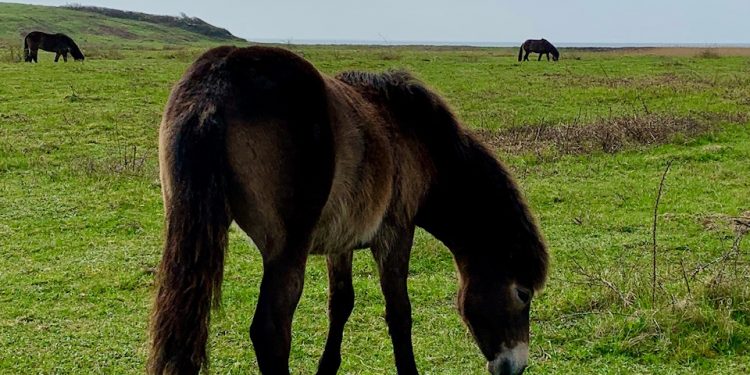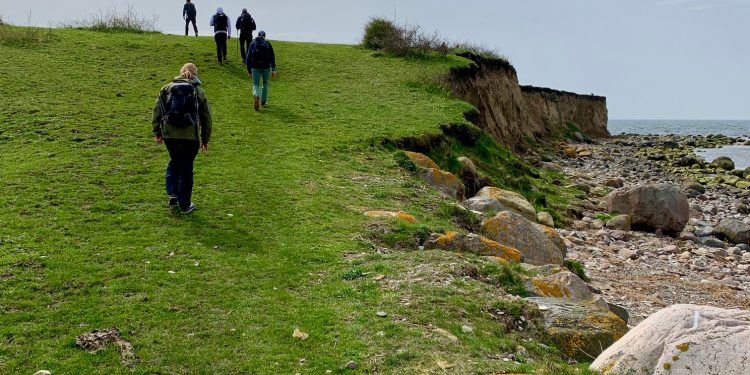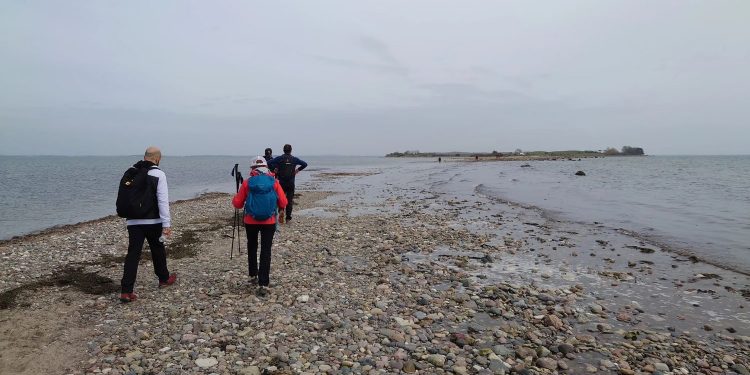A great excursion to wild nature and beautiful vistas: Knudshoved Odde
Sanctuary for the Senses: Wander wild grasslands, spy rare creatures and roam kilometres of unspoiled coastline just an hour from Copenhagen
The article continues below.
Pictures and text by Casey Blaine
Ready for a wander on the wild side? Knudshoved Odde, a slender, 15-kilometer peninsula jutting west out of south Zealand, is your destination. This area is a hidden jewel, and “wild” is just the word for it.
In fact, in 2023, the town of Vordingborg was given the title of “The Wildest Municipality in Denmark” thanks to award-winning conservation work taking place on the narrow, finger-shaped headland that sits just to Vordingborg’s west.
The area is a nature-lover’s delight. Teeming with thriving plant life; ancient, wind-bowed trees; rare amphibians, reptiles, and birds as well as delightfully scruffy wild-grazing ponies and cattle.
The 280-hectare expanse feels untouched by time when in fact it has been the focus of conservationists for several years.
The article continues below.
With the cooperation of the Rosenfeldt Estate, on which the headland sits, and a variety of other organizations, an ambitious project called LIFE Clima-Bombina has been created with the aim to combat some deleterious effects of climate change in coastal areas and create safe habitats where coastal species can thrive.
With its high-ground, fresh-water breeding ponds, thriving wild pastures, bird-friendly habitats and winter havens for amphibians and reptiles, Knudshoved Odde is a place where fragile species have an opportunity to thrive in a fluctuating environment.
The walking here is spectacular. Well-worn paths of dirt, small rocks and sand are easy to navigate.
The article continues below.
Be prepared, though: you may have the feeling as you stroll that all your senses have suddenly come alive; to the tang of salt in the air, the sensation of water enveloping you on both sides, the sounds of wildlife’s merry chirps and rumbles, and the magnificent views of sweeping grasslands, sandy coastal slopes, and ancient, windswept trees.
Denmark’s most endangered amphibians live here, including spadefoots, natterjacks, treefrogs, and green toads.
Our hiking group scanned multiple fresh-water ponds along our route hoping to spot one of the “stars” of the environmental project, –the bell frog, aka bombina bombina, the project’s namesake. Though we were certain we heard them, alas, they eluded our gaze.
We did, however, spot two coal-black snakes, which a reptile-enthusiast in our group suggested were adders, the only venomous snake in Denmark.
These markedly shy, nonaggressive creatures were coiled up a few meters off the path in some scrubby blackberry thickets and seemed to be enjoying the sun like everyone else. We appreciated the glimpse–from a distance –and walked on by, leaving them to their sunbath.
The article continues below.
Any birder will surely marvel at the spectacular variety of birds. I am not well-versed in bird identification or song, but even I could tell that the melodies coming from such a wide mix of birds was something special.
Still, for me, the highlight was the jaunty Exmoor ponies that graze free here, and who, in mid-April, still wore their thick, fluffy coats as they nosed around the grasses, eyeing us with ridiculously thick-lashed, brown eyes.
Our destination and the halfway mark of our walk was the point (“hovedet”), a grassy hill that sits atop a sandy cliff.
With a view of Småland Sea to our left and Avnø Fjord to our right, we lounged and enjoyed well-earned rest and a picnic, listening to waves splash against the rocks below and watching a few intrepid fishermen wade into the cold water with poles and nets, perhaps casting for the flounder or trout that swim near the shore here.
With 21 kilometres left to go, it was time to finish our picnic and head back to Vordingborg.
The area is shaped a bit like an hourglass, with two wide, natural areas separated by a very slim, very sandy, 400-meter-long stretch called Draget.
The article continues below.
Draget is just a few meters wide at its narrowest point, and signage at the start had warned us that high tide periodically floods this section. And so it went with us upon our return from the point.
Even with high tide, water cover was just ankle-deep – perhaps 15 centimetres at its deepest– but it did necessitate going barefoot through extremely chilly water in order to avoid walking in wet shoes and socks for the remainder of the hike.
Yes, the water was cold, but we all agreed afterwards that the sensation was remarkably refreshing and the perfect restart for our feet as we headed into the last kilometres of the walk.
That said, if you don’t fancy the idea of wading through water, you can either skip the point and turn around at Draget or aim to time your crossing just right, by checking water levels at www.dmi.dk.
The article continues below.
How to get there:
The train from København H to Vordingborg Station is approximately one hour. From there, our hiking group walked the entire peninsula for an out-and-back of 42 kilometres. Our route included forest paths and quiet country roads before hitting the dirt and sand paths that comprise the heart of the conservation area.
If cycling is more your style, this route is bike-friendly, although you will need to park your bike to walk the sandy, rocky terrain that comprises the last kilometres out to the point.
By car, map your route to Knudshoved Odde, 4760 Vordingborg, where you’ll find a small parking at the edge of the east nature area, approximately halfway up the peninsula.
A hike to the point and back from here is 14 kilometres. Note that a few shorter loops are available to explore the area, as shown on a map posted in the parking lot.
Happy Hiking!
Support our magazine with a contribution of any size
We do not want to put up a pay-wall, so we need your support and if you find our content relevant and worthwhile, we would value any contribution, however big or small, as a token of your appreciation of our efforts.
How to support:
Transfer any contribution to our bank account at: Your Danish Life/ Danish Expat Media Aps
Danske Bank Account number: 3409 11405673
IBAN: DK68 3000 0011 4056 73
or MobilePay to 2144 1224
Message: Support




